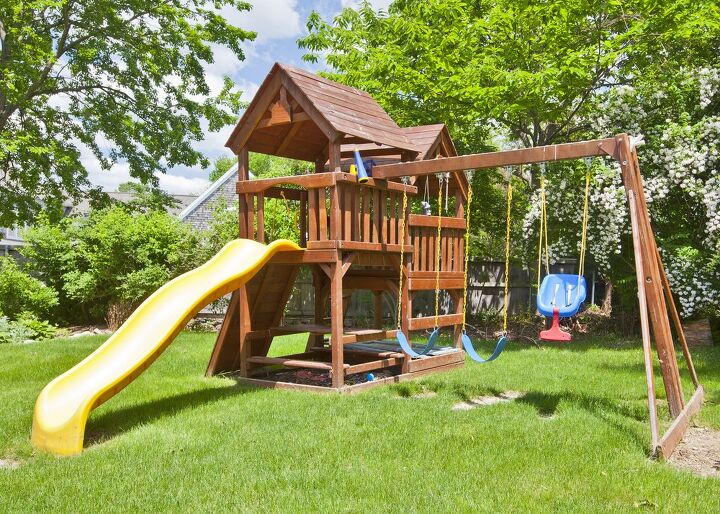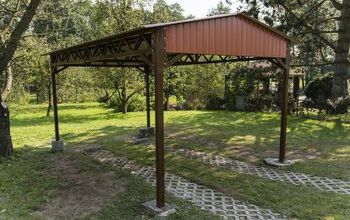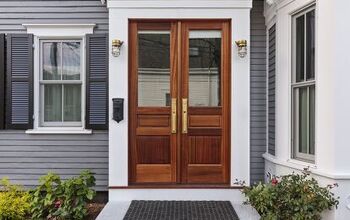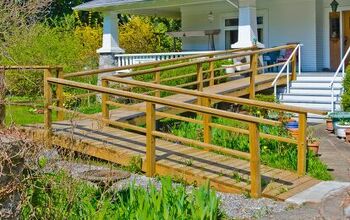Do You Need A Permit For A Swing Set? (Find Out Now!)

Providing a fun play space for kids in the backyard is standard practice for parents. A popular and classic outdoor play item is a backyard swing set, but these structures have greatly changed over the years. Now, some outdoor play structures are so involved; you might need a permit for a swing set.
Although codes vary by state, you likely don’t need a permit for a basic swing set. However, if the swing set is part of a wooden play structure with additional attached features, you may need a permit. Therefore, before purchasing and assembling a play structure, it’s wise to check with your local permit and code office.
Also worth considering is if you plan to cement the swing set into the ground. If so, this can add a whole other layer to the process. Therefore, it’s best to do a little digging before you start shopping for your kid’s outdoor playset.
Do You Need a Permit Service?
Get free, zero-commitment quotes from pro contractors near you.

A Basic Swing Set Doesn’t Usually Need A Permit
If you’re getting a simple swing set, you likely won’t need a permit. A basic residential swing set features the typical A-frame, usually metal but sometimes wood, with two or three swings. Some styles might feature a see-saw-style swing or a bench swing, and some may include a small slide.
These swing sets are usually only about 6 to 7 feet tall to the main beam that holds the swings. The shorter versions are mainly for preschool-age children and the taller for older kids. If it has a slide, the slide is usually short. Depending on the overall swing set height, it’s only about 3 to 4 feet off the ground.
Also, these swing sets don’t feature walls or roofs, or any type of climbing apparatus. If this sounds like what you’re looking at, you likely don’t need a permit for this swing set. But, if you want to play it extra safe, you can always check with your local permit office.
Generally, on the state level, you don’t need a permit for a swing set. However, this can change as you narrow it down to the city, then county building codes. Additionally, a homeowners association will likely have the final say if your neighborhood has one.
When Might You Need A Permit For A Swing Set?
Of course, nowadays, it seems that swing sets are anything but basic. Kids have their pick of the ultimate play structures, featuring bridges, tunnel slides, rock walls, and two or even three-level clubhouses.
These playsets bring the idea of a swing set to a whole new level. If you’re planning to get one of these impressive outdoor structures, you’ll likely need a permit.
Swing sets with all of these extras usually pose more of a risk, so they must be installed safely. But, it isn’t just about getting a permit for the swing set; it’s everything that goes along with it.
Extra Considerations For A Swing Set Permit
As part of the permitting process for a swing set, you need to consider a few things. Because of the height of the structure, falls are a potential danger. You need to make sure no one can wander onto your property, start climbing, and get hurt.
Therefore, part of the requirements for your permit will likely be a fence around your yard. You may also need to place some type of ground cover below the structure to provide protection.
You will also have certain distances you’ll need to maintain between the sides of the structure and other items. For example, the general recommendation is to leave at least 6 feet around your structure.
In the areas in front and behind the swings, you should leave double the height of the bar. So, if it’s a 7-foot tall frame, you should ideally have 14 feet in front and behind for the swings. Keep in mind you should heed these clearance recommendations for any swing set, whether you need a permit or not.
Getting A Permit For A Swing Set
The good news is, acquiring a permit for a swing set shouldn’t be too difficult and only costs about $25 to $100. But first, contact your local county’s zoning authority and ask some questions.
Remember, depending on where you live and the structure’s size, you might not need a permit. But, the permit office can walk you through the process and steer you in the right direction.
If you have an HOA, make sure to check with them too. You’ll need to provide information regarding the size and type of the swing set. You might also need to show plans for the structure.
What If I Need A Permit And Don’t Get One?
What if you decide to take a gamble and install a swing set without the necessary permit? Any one or more of the following might happen:
- The local zoning authority requires you to purchase a permit immediately.
- Local authorities make you take down the swing set and start from scratch.
- You learn you can’t have a swing set at all and need to take it down right away.
- You have to pay a fine; the amount varies.
Do You Need a Permit Service?
Get free, zero-commitment quotes from pro contractors near you.

Related Questions
Can I bring a swing set with me when I move, or do I have to leave it with the house?
If the swing set isn’t cemented into the ground, you can take it with you. Still, it’s wise for your agent to make it clear that the swing set won’t stay. If the play structure is more permanent (i.e., in the ground), it generally stays with the house. If you don’t plan to leave it, it needs to be very clear to potential buyers and in all contracts that this is the case.
How much is a basic swing set?
A basic swing set costs about $150 to $300, with the higher price going to those with a slide. More involved, larger sets, with bench swings, etc., can run closer to $350 to $500. If you want a wooden play structure with a clubhouse, tunnel slide, and fancy features, be prepared to pay $1,500 to $3,000.

Stacy Randall is a wife, mother, and freelance writer from NOLA that has always had a love for DIY projects, home organization, and making spaces beautiful. Together with her husband, she has been spending the last several years lovingly renovating her grandparent's former home, making it their own and learning a lot about life along the way.
More by Stacy Randall



























